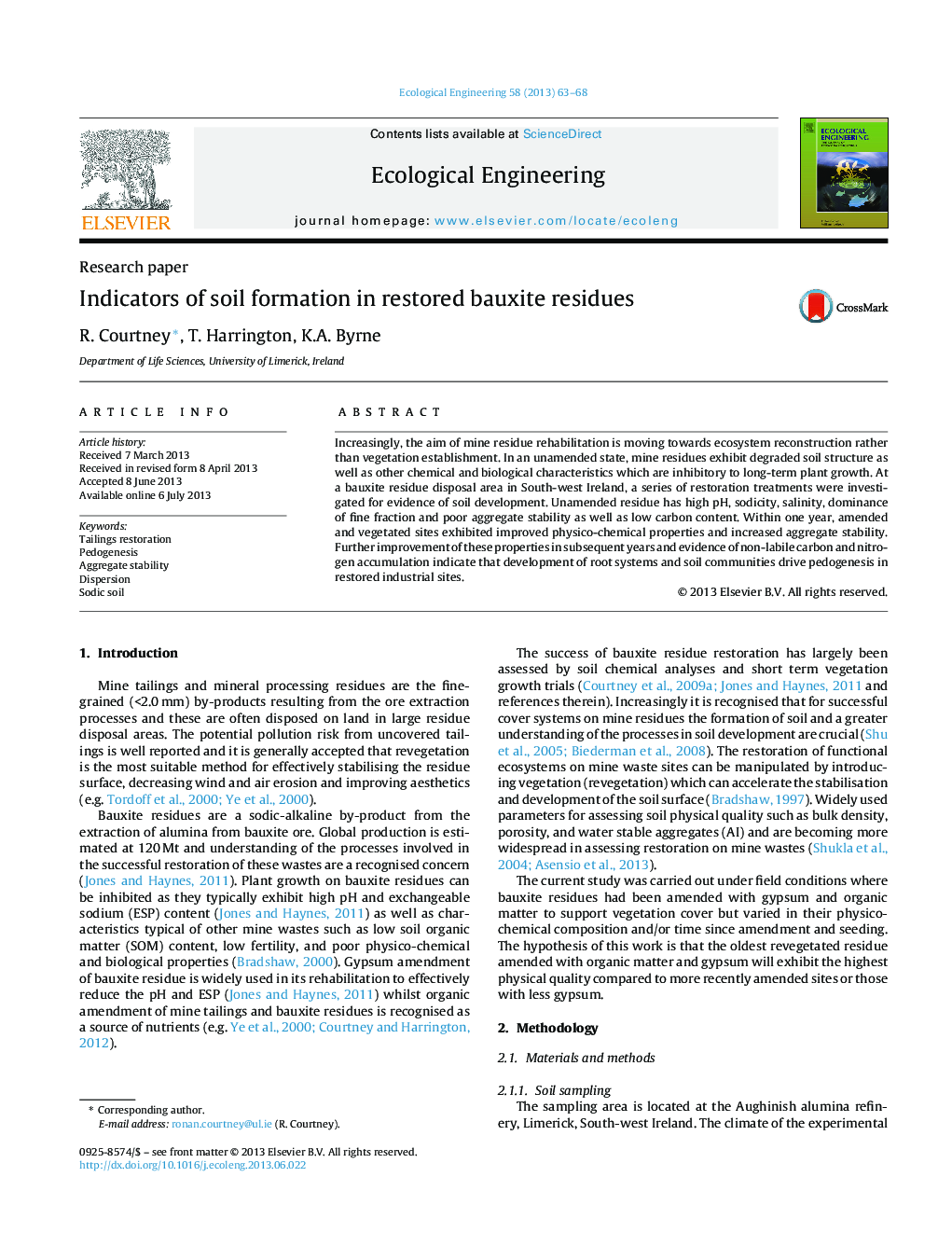| Article ID | Journal | Published Year | Pages | File Type |
|---|---|---|---|---|
| 6302474 | Ecological Engineering | 2013 | 6 Pages |
Abstract
Increasingly, the aim of mine residue rehabilitation is moving towards ecosystem reconstruction rather than vegetation establishment. In an unamended state, mine residues exhibit degraded soil structure as well as other chemical and biological characteristics which are inhibitory to long-term plant growth. At a bauxite residue disposal area in South-west Ireland, a series of restoration treatments were investigated for evidence of soil development. Unamended residue has high pH, sodicity, salinity, dominance of fine fraction and poor aggregate stability as well as low carbon content. Within one year, amended and vegetated sites exhibited improved physico-chemical properties and increased aggregate stability. Further improvement of these properties in subsequent years and evidence of non-labile carbon and nitrogen accumulation indicate that development of root systems and soil communities drive pedogenesis in restored industrial sites.
Related Topics
Life Sciences
Agricultural and Biological Sciences
Ecology, Evolution, Behavior and Systematics
Authors
R. Courtney, T. Harrington, K.A. Byrne,
